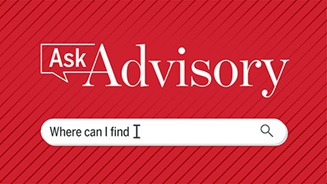By Nick Cericola and Katie Everts
Bridgeport Hospital Foundation, based in Bridgeport, CT, launched a COVID-19 Support Fund as their hospital began receiving patients with the novel virus. Susan Chudwick, director of development, recently spoke with Advisory Board’s Nick Cericola and Katie Everts about communicating with donors during COVID-19 and collaborating with internal stakeholders to support their hospital’s greatest needs.
Q: Susan, thank you for sharing your time with us. In the week after launching a COVID-19 fund, Bridgeport Hospital Foundation received $100,000 toward ventilator purchases, and donors rallied to provide meals and childcare to hospital staff. What is the most important decision you and your colleagues have made so far during this crisis?
Chudwick: I think it was our decision to create a communications plan for our donors, specifically personal check-ins with our major donors. We didn’t stop talking with them, but we did shift our strategy to focus on their reality and our organizational response.
It’s important for foundations to anticipate donors’ anxiety, provide support, and most importantly, connect on a very human level. As the New England saying goes, “A rising tide lifts all boats,” and we’re going to lift these boats.
Q: I love your use of the word “human” in this context. It’s been really powerful to see all the ways communities of individuals are reaching out to each other, despite social distancing. What are you communicating to donors on your calls with them? What resources are you providing them with?
Chudwick: Some of our donors have proposals in front of them right now, but we’re not calling them to follow-up on those asks—we’re calling to ask them, “how are you doing?”
We’re letting them know we’re here to help, wherever needed. We provide them with our hospital’s hotline number for any COVID-19 concerns. We give them updates on how the hospital is handling PPE, elective surgeries, and patient visitor protocols. We’re also encouraging our older donors to not be fearful if they need to use our services.
Many of our conversations have resulted in gifts because our donors are concerned about COVID-19 and looking for ways to help. Donors want to know how the virus is effecting our hospital, and we’re transparent with them. For example, a first time major donor ended up giving to our employee assistance fund after learning about our frontline staffers’ needs.
Q: Your team is receiving all types of generosity from donations of ventilators to restaurant gift cards for staff. How are you collaborating with internal stakeholders to make sure these gifts are efficiently and quickly getting into the hands that need them most?
Chudwick: We are working very closely with system leadership, human resources, and our food and nutrition department to channel donor support.
Capital needs for things like ventilators are being catalogued at the system level (editor’s note: Bridgeport Hospital is part of Yale New Haven Health System), so we’re in close contact with those leaders to make sure they know what resources the foundation has available.
Our team has been working closely with HR at Bridgeport Hospital to create a streamlined system for employees to access our emergency assistance fund. Employees used to go through an onerous screening process to receive support. We simplified and lightened up the process so that our care team and other staff can receive assistance faster and easier.
I also collaborated with our food and nutrition department to create a safe process for meal donations. Because we want to limit employees’ exposure to each other, we’re not sending out large catering trays. When the foundation receives food, we send everything to F&N and they box the food individually. To make sure food is being dispersed throughout the hospital, F&N created a matrix to keep track of how recently each department —from frontline ED staffers to security—received a food drop-off.
Q: A recent survey from the Nonprofit Alliance found that 74% of nonprofits have adjusted their fundraising appeals to acknowledge the coronavirus. How are you communicating your hospital’s critical need for support with your annual donors and your community writ large?
Chudwick: On March 20th, we sent a brief email to everyone we have in our development database—all past donors and event attendees—asking for donations to our COVID-19 Support Fund. Within a week, we received 38 gifts amounting to nearly $40,000. Twelve of those gifts were from first time donors. There is no comparison for how much support we’re receiving compared to email campaigns under more normal circumstances; this crisis is deeply resonating with our donors.
We sent out another email ahead of Doctor’s Day on March 30th. We modified our typical language to mention our COVID-19 Support Fund and reflect that our doctors need the community’s support now more than ever.
Example of BHF’s Doctor’s Day messaging:

Don't miss out on the latest Advisory Board insights
Create your free account to access 1 resource, including the latest research and webinars.
Want access without creating an account?
You have 1 free members-only resource remaining this month.
1 free members-only resources remaining
1 free members-only resources remaining
You've reached your limit of free insights
Become a member to access all of Advisory Board's resources, events, and experts
Never miss out on the latest innovative health care content tailored to you.
Benefits include:
You've reached your limit of free insights

